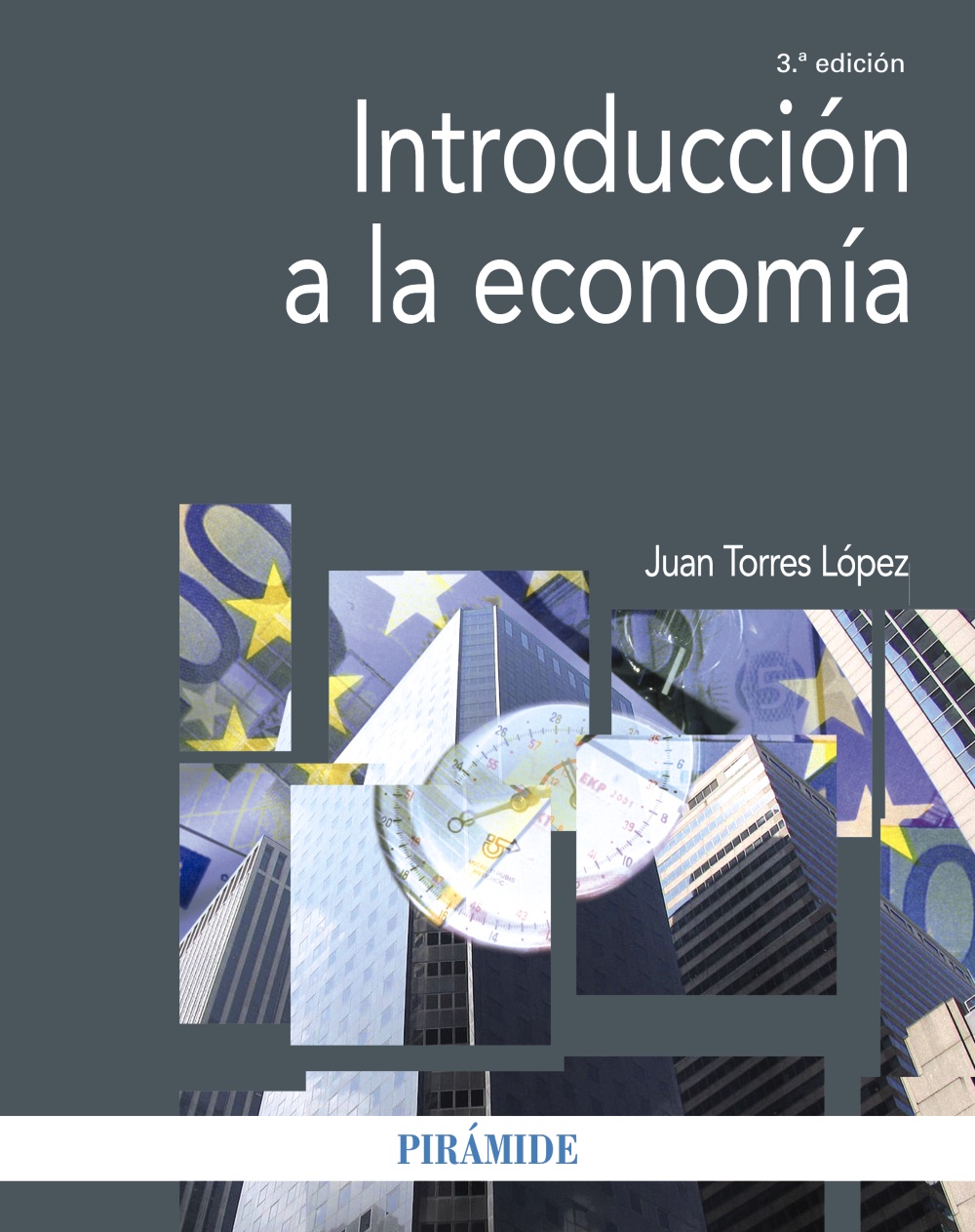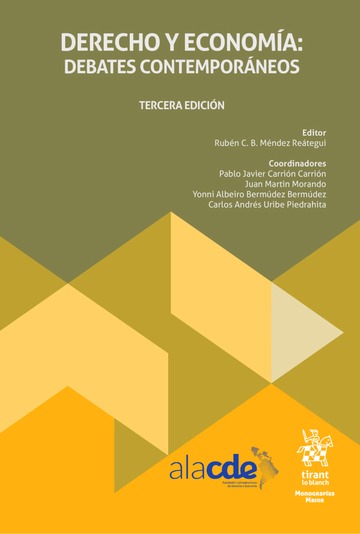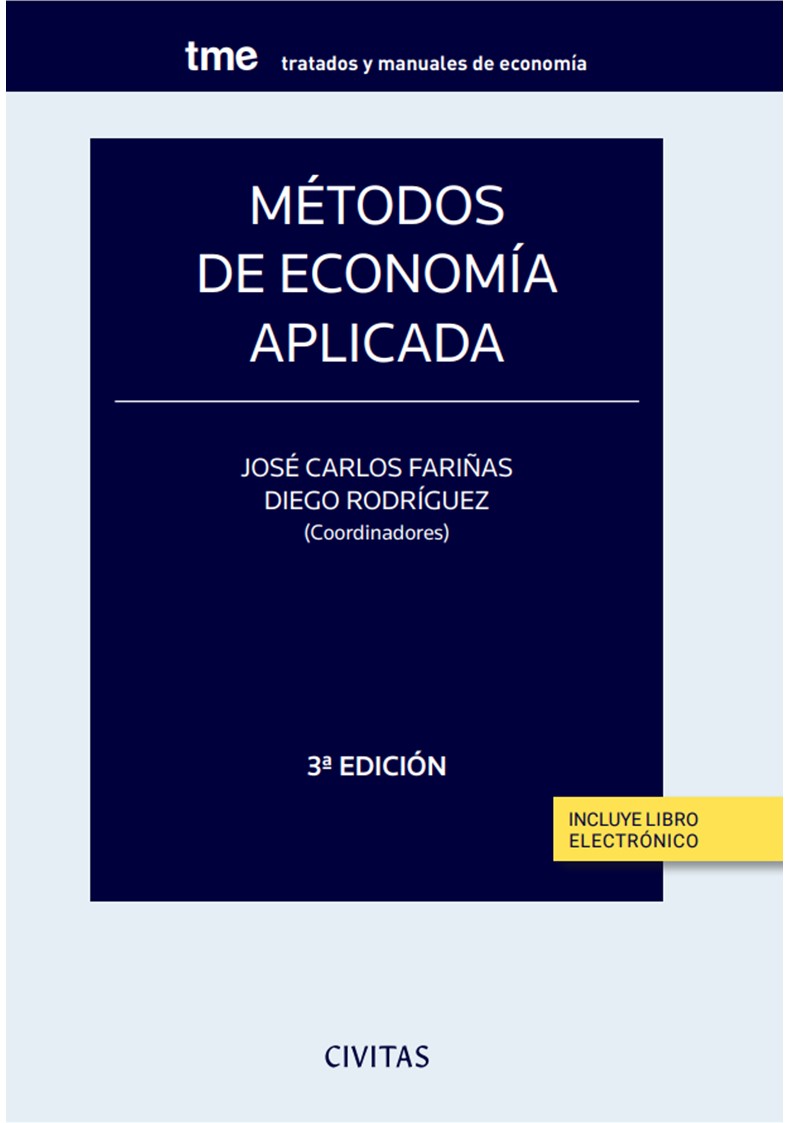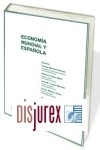An Introductory Course on Spanish Law and Economics
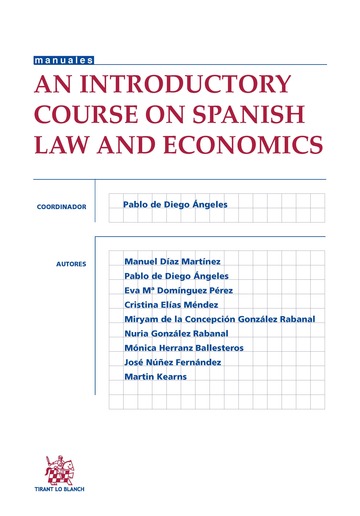
(0 Comentarios)
Comenta y valora este libro
- ISBN: 9788490535042
- EAN: 9788490535042
- Editorial: Tirant lo Blanch
- Fecha de la edición: 20/02/2014
- Nº Pág.: 189
Materias:
PREFACE 13
Chapter 1
SECTOR ANALYSIS OF THE SPANISH ECONOMY
1.1. THE IMPORTANCE OF POLITICAL AND ECONOMIC HISTORY IN THE FUNCTIONING OF THE SPANISH ECONOMY 20
1.2. GOOD AND SERVICES: SECTORS OF ECONOMIC ACTIVITY 21
1.2.1. Primary industry: agriculture 22
1.2.1.1. Recent Developments 22
1.2.2.2. A descriptive economic analysis of the agricultural subsector 24
1.2.1.3. An economic analysis of the livestock subsector 28
1.2.1.4. The situation in the fishing subsector 28
1.3. THE SECONDARY SECTOR: INDUSTRY 32
1.3.1. The recent development of Spanish industry 33
1.3.2. The construction (building) subsector 35
1.3.3. The Energy subsector 36
1.4. THE THIRD SECTOR: SERVICES 40
1.4.1. The service sector in Spain 41
1.4.2. The Tourism subsector 42
Chapter 2
The Economic framework of Spanish law in its constitutional context
The general legal protections providing for the basic economic relations of individuals.
The interaction of the public and private economies under the Constitution
2.1. The Spanish Economy. Introduction. The economic framework of Spanish law 48
2.2. The Constitution as an inspirational structure in the economic legal framework 50
2.2.1. Basic features of employment regulations and social security 52
2.2.2. Commerce, Competition and Consumer Protection 54
2.2.2.1. Domestic trade 54
2.2.2.2. Protection of competition 56
2.3. The public sector economy as a limit, substitute and subsidiary of the private sector 57
2.3.1. Public sector finance; the regulation of public revenue and costs 60
2.3.2. The financial, banking and borrowing sector in Spain 62
2.3.3. The general budget for the State and the various public administrations 63
2.3.4. The regulation of state and public sector accounts based on the public budget 65
Chapter 3
Spanish Public Law in the context of the european union. Constitutional State Law. Territorial Organization
3.1. METHODOLOGICAL PREMISES 68
3.2. THE CONSTITUTION AS THE SUPREME SOURCE OF LAW 69
3.3. A SOCIAL AND DEMOCRATIC STATE SUBJECT TO THE RULE OF LAW 71
3.4. DOGMATIC PART: THE SYSTEM OF RIGHTS AND LIBERTIES 72
3.5. THE ORGANIC PART 76
3.5.1. The Head of State. The Parliamentary Monarchy 77
3.5.2. The Government and the Administration 79
3.5.3. Parliament 84
3.5.4. Judicial Power 93
3.5.5. The Constitutional Court 95
3.6. TERRITORIAL ORGANIZATION: THE AUTONOMOUS STATE 101
3.6.1. The Autonomous Communities 102
Chapter 4
The fundamentals of Private Law in the Spanish Legal system
4.1. A short introduction to: Civil and Commercial Law, codification and unification. Public and Private Law 108
4.1.1. Civil and Commercial law, codification and unification 108
4.1.2. Private and Public Law 110
4.2. Globalization and Private Law 110
4.3. The Fundamentals of Civil Law 111
4.3.1. Sources and legislation 111
4.3.2. Areas of Civil Law 112
4.3.3. General and specific legislation 112
4.3.4. General and specific legal rules 113
4.3.5. Compulsory and default rules 114
4.3.6. Some recent developments in the Spanish Civil law: conflict resolution through arbitration and mediation 114
4.4. The basics of Commercial Law 115
4.4.1. Commercial Transactions 115
4.4.2. The Sources of Commercial Law 116
4.4.3. The «market» and Commercial Law 117
4.4.4. Subjects of the market and Commercial Law 117
4.4.4.1. Objects of trade in the market 118
4.4.4.2. The commercial courts 120
4.4.4.3. The Sectors that comprises Commercial Law 121
Chapter 4 (II)
Main Features of Spanish Private International Law
4.II.1. presumptions and objectives of Private International Law 126
4.II.2. The Sectors that regulate International Private Law 126
4.II.3. Spanish Private International Law 128
4.II.4. The Classification of Spanish Private International Law 128
4.II.4.1. Introduction 128
4.II.4.2. State jurisdiction and the legal basis for the rules governing private international cases 128
4.II.5. The Structure (Configuration) of Spanish International Private Law 129
4.II.5.1. Different sources: domestic legislation, international and European Union Regulations 130
4.II.5.2. The elements that contributed to the creation of the Spanish system of Private International Law: other factors and the known sources of private origin 138
Chapter 5
Introduction course to Spanish criminal law
5.1. The concept of Criminal Law 140
5.1.1. The Criminal law from a formal and objective perspective 140
5.1.2. The Criminal law from a subjective perspective 145
5.1.3. The aims of the Criminal Law 145
5.1.4. The aims of Criminal Law within the Spanish legal system 146
5.2. The boundaries of Criminal Law 149
5.2.1. Introduction 149
5.2.2. The formal boundaries 149
5.2.2.1. The subjective boundary 150
5.2.2.2. The objective boundary: the legality principle 151
5.3. The material boundaries 157
5.3.1. The principle of fact 157
5.3.2. The principle of exclusive protection of interests that allow the peaceful coexistence of individuals (harmfulness principle) 158
5.3.3. The minimum and fragmentary criminal intervention principle 159
5.3.4. The personal responsibility principle 160
5.3.5. The proportionality principle 161
5.3.6. The humanity and dignity principle 162
5.4. The legal concept of criminal behaviour: Elements and structure and consequences according to the Spanish Criminal Code 163
5.4.1. The legal concept of criminal behaviour 163
5.4.1.1. Human behaviour 163
5.4.1.2. «Actus Reus» and «Mens Rea» 164
5.4.1.3. The objective aspect also known as «actus reus» 164
5.4.1.4. The subjective aspect: «Mens rea» 165
5.4.2. Lack of justification 166
5.4.3. Guiltiness 166
5.4.4. Punishability 167
5.4.5. Imposition of a penalty 169
Chapter 6
AN OUTLINE STUDY OF SPANISH PROCEDURAL LAW
6.1. CONCEPT AND ESSENTIAL DEFINITIONS 171
6.2. THE RULES OF PROCEDURE: CONCEPTS AND CLASSES 172
6.3. THE PROCEDURAL STRUCTURE 174
6.3.1. The declaratory process 175
6.3.1.1. Opening arguments 175
6.3.1.2. Evidential Phase 176
6.3.1.3. Findings and sentence 177
6.3.1.4. Appeals 177
6.3.2. Execution 178
6.3.3. Preventive measures 179
6.4. TYPES OF PROCESS 180
6.4.1. Ordinary, summary and special procedures 181
6.4.2. An outline of procedural areas 181
6.4.2.1. Criminal Procedure 182
6.4.2.2. Constitutional Procedure 184
6.4.2.3. Administrative Procedure 185
6.4.2.4. Civil Procedure 186
6.4.2.5. Employment Law Procedure 188
Otros libros de MANUAL UNIVERSITARIO
-
32,00 €30,40 €
-
33,95 €32,25 €
-
Derecho y economía: debates contemporáneos 3ª Edición
Bermúdez Bermúdez,Yonni Albeiro; Carrión Carrión,Pablo Javier; Martín Morando,Juan; Méndez Reátegui,Rubén C. B.; Uribe Piedrahíta,Carlos Andrés
Tirant lo Blanch. 2024
19,49 €18,52 €
-
Métodos de economía aplicada (3ª Edición) 2023
Diego Rodríguez ( Coordinadores ); Jose Carlos Fariñas Garcia
Civitas. 2023
20,53 €19,50 €
-
30,00 €28,50 €




